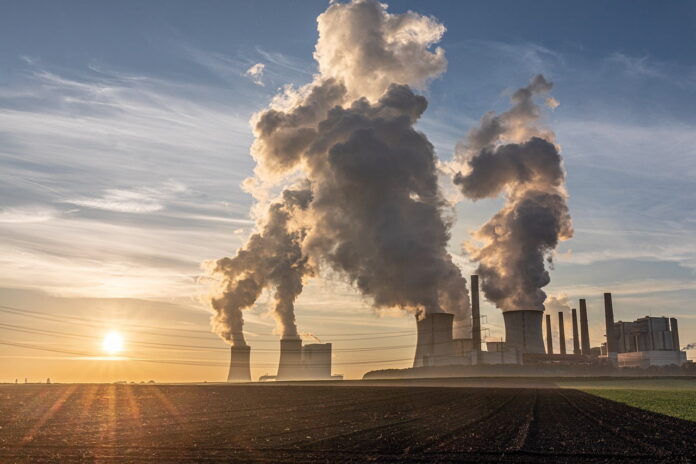The story of carbon as the cornerstone of our energy systems begins with the black rocks that powered the Industrial Revolution: coal. In the late 18th century, Britain was the epicenter of a profound transformation. The discovery that coal could be used to power steam engines marked the beginning of the carbon era. This innovation led to the development of factories, railways, and steamships, all of which were hungry for the energy that coal could provide.
The use of coal as an energy source had several advantages. It was abundant, especially in the regions that would become the industrial powerhouses of the world. It was also energy-dense, meaning that a small amount of coal could produce a large amount of power. This made it ideal for the burgeoning industries of the time. By the mid-19th century, coal had become the lifeblood of industry, and its use had spread across Europe and to the United States, where it would fuel the rise of a new economic superpower.
The impact of coal on society was profound. It not only powered the machines that produced goods on an unprecedented scale, but it also changed the way people lived. Cities grew around coal mines and factories, and the very landscape of the industrialized world was reshaped by the demand for this black rock. The era of coal was one of rapid change and growth, but it also sowed the seeds of future environmental challenges.
Black Gold: The Twentieth Century and the Ascendancy of Oil
As the 20th century dawned, a new form of carbon began to take center stage: oil. Dubbed “black gold,” oil would come to dominate the energy landscape even more completely than coal had. The discovery of vast oil reserves in places like Texas, California, and the Middle East provided an energy source that was more versatile and easier to transport than coal.
The rise of the automobile industry was a key factor in the ascendency of oil. Cars, trucks, and later airplanes would all rely on petroleum-based fuels. The internal combustion engine became the dominant technology for transportation, and oil became its lifeblood. By the mid-20th century, oil had surpassed coal as the world’s leading energy source, and the geopolitics of oil began to shape international relations in profound ways.
Oil’s dominance was not just about transportation. It also became a key ingredient in the production of plastics, fertilizers, and a host of other products that defined modern life. The economies of entire nations were built on the extraction and export of oil, and the control of oil resources became a strategic priority for governments around the world. The 20th century was the age of oil, and its influence was felt in every corner of the globe.
The Peak of Power: How Carbon Shaped the Modern World
The reign of carbon reached its peak in the late 20th and early 21st centuries. Coal and oil, along with natural gas, another carbon-based fuel, provided the vast majority of the world’s energy. This trio of fossil fuels powered economies, shaped geopolitics, and enabled the technological advancements that defined the modern era.
The availability of cheap and abundant energy from fossil fuels was a key driver of economic growth. It allowed for the mass production of goods, the expansion of international trade, and the development of global supply chains. The standard of living for many people around the world improved dramatically as a result of the energy that carbon provided.
However, the reliance on carbon-based energy also had unintended consequences. The burning of fossil fuels released vast amounts of carbon dioxide into the atmosphere, leading to climate change. The signs of this environmental crisis became increasingly clear as the 21st century progressed, with rising temperatures, melting ice caps, and more frequent extreme weather events. The very source of our prosperity was threatening the future of our planet.
The Climate Conundrum: Carbon’s Legacy and the Quest for Sustainable Energy
The legacy of carbon is a double-edged sword. On one hand, it has enabled incredible advances in technology and quality of life. On the other, it has led to an environmental crisis that poses a threat to the very systems that sustain human civilization. The challenge now is to find a way to power our world without compromising the health of our planet.
The quest for sustainable energy has become one of the defining challenges of our time. Renewable energy sources like wind, solar, and hydroelectric power offer the promise of a future that is not reliant on carbon. Advances in battery technology and energy efficiency are making it more feasible to transition to a low-carbon economy. However, the scale of the challenge is immense, and the transition must happen quickly to avoid the worst impacts of climate change.
The move away from carbon-based energy is not just an environmental imperative; it is also an economic one. As renewable energy becomes cheaper and more efficient, it is increasingly competitive with fossil fuels. The countries and companies that lead the way in developing sustainable energy technologies are likely to be the economic powerhouses of the future.
The rise and reign of carbon have shaped the modern world in profound ways. From the coal-powered factories of the Industrial Revolution to the oil-fueled cars and planes of the 20th century, carbon has been the driving force behind our progress. But as we confront the reality of climate change, we must find a new path forward. The history of energy dominance is still being written, and the next chapter will be about the transition to a sustainable future.
